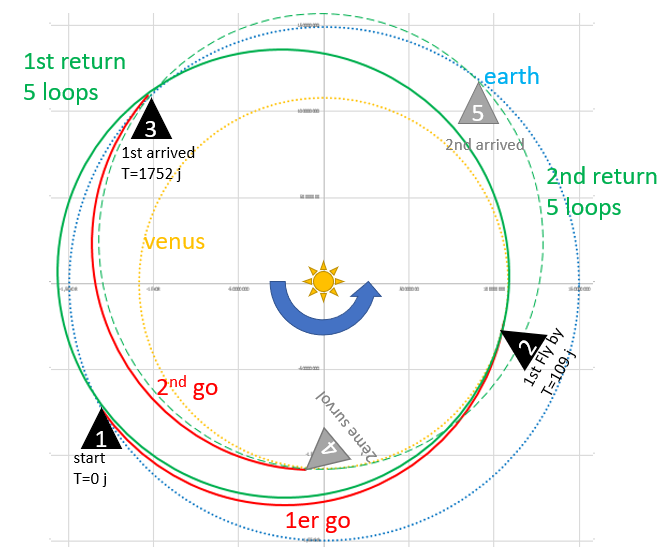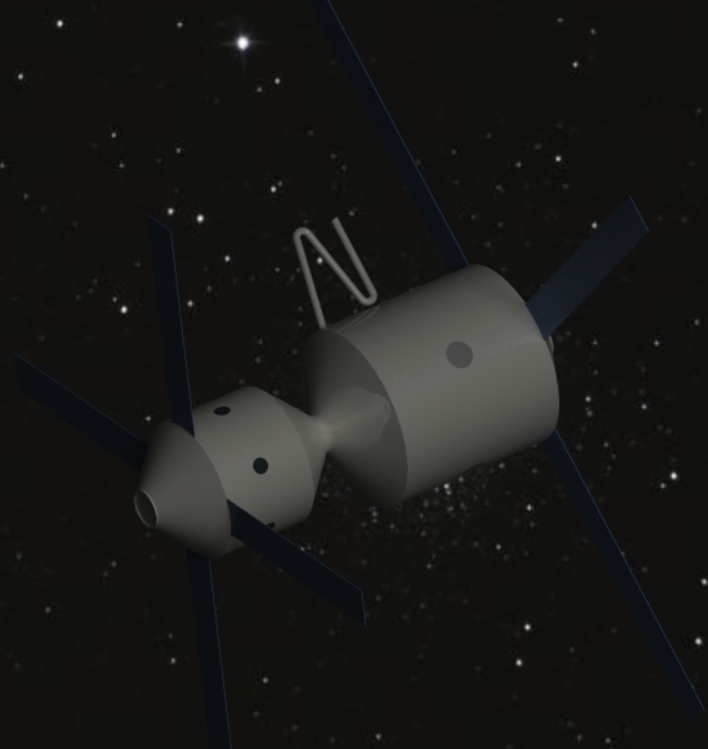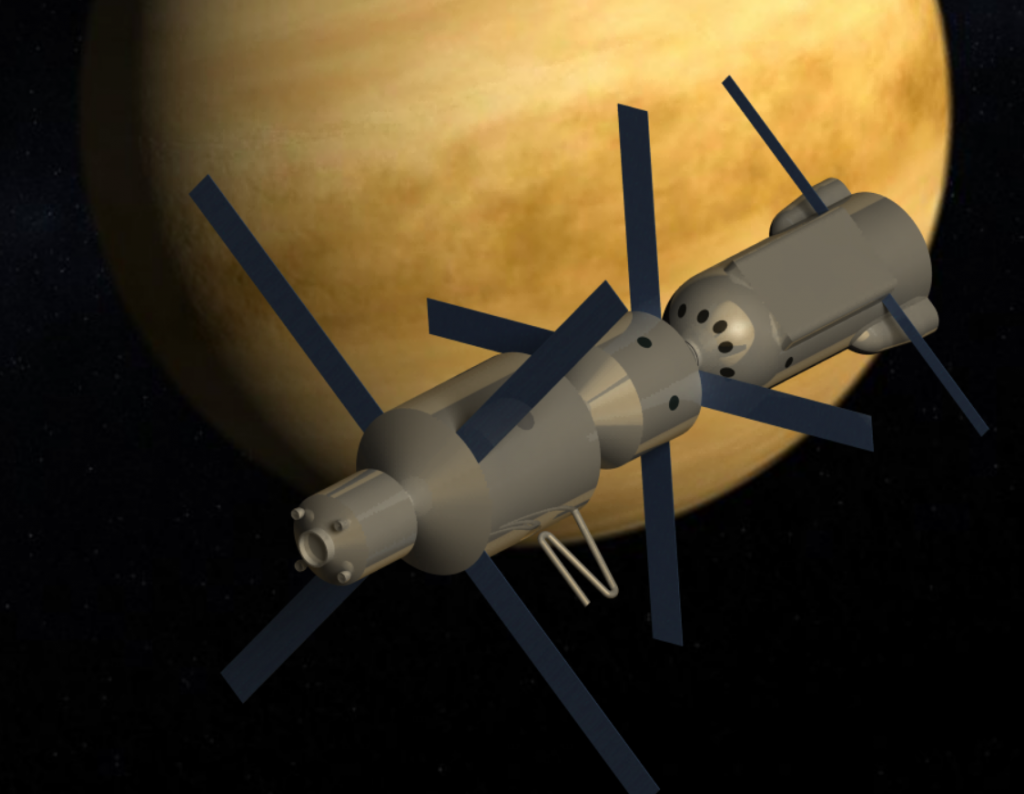The MMP is to limit the masses injected into an orbit heliocentric. However, it is too small to house the six members during the 109-day Journey between Terre-Venus and Venus-Earth. The habitat is therefore cycler-type, the modules are sent into an orbit of Earth-Venus transfer on which they are joined by the MMV which undocking as Venus approaches. While the MMV is air-braking, The cycler uses gravitational assistance to change orbit. It then makes 5 orbits before approaching Earth again 1752 days later his departure. With the gravitational assistance of the Earth, it can therefore resume its trajectory towards Venus by recovering a MMV in passing. This 1752 days corresponds to the period of 3 Earth-Venus alignments.

A second cycler is launched into the holding orbit and will recover the MMV to bring it back on Earth. It is therefore necessary to have two cyclers per mission, but being they are blocked for three periods of alignment, a set of 6 cyclers is required to be able to chain missions to each alignment.
From a point of view design view, the architecture is not fixed, but here is a configuration possible, consisting of two modules.
The first module put into orbit is the Multipurpose Logistics Module (MLM) that is designed based on the Leonardo module of the ISS. It includes the whole part “work” communication systems, life support racks, experiences scientists in deep space, communication equipment and orientation. It also carries the layout of the second module.
The second element of the cycler is the dual function module (DFM), which takes up the concept wet workshop studied since the Apollo program. As a first step, the DFM propulsion module office that docks to the MLP before activating a second time to place the whole thing on the heliocentric orbit Attributed. Once empty, the module drops its engine which is installed on lower mooring ring. After arrival, the first crew can open all tank hatches to unify the living space. The hydrogen tank is then converted with a lounge and 6 cabins installed longitudinal axis while the “bathroom” part takes place oxygen tank.

In addition to these two basic modules, during periods of occupancy, the cycler is added MMP and the cargo module it carries. This module includes consumables for the 110 days of use of the cycler, as well as propellants for trajectory corrections. Finally, this cargo module can be used as a lifeboat, if the MMP can no longer disarm or is no longer operational while the crew is on board. Passengers will wait next flyby of the Earth to get into the cargo ship. The latter will pump all RCS propellants available in the cycler, so that it can detach and to orbit the Earth in order to be rescued.
As time has been the case, measuring missions and the possible increase in crew size, additional modules can be added to the cycler to finish installing a centrifuged habitat.

| MLM | Note | Mass (kg) |
| Structure | 5 000 | |
| Rcs | 750 | |
| Energy | 750 | |
| Thermal control | 250 | |
| Computer | 100 | |
| Life support | 1 000 | |
| Interior | 1 250 | |
| DFM development | 2 000 | |
| Scientific experiments | 500 | |
| Emergency freeze-dried rations | For 1650 days | 2 500 |
| Design Reserve | 1 900 | |
| Total | L – 6.4 m, D – 4.57m | 16 000 |
| DFM | Note | Mass (kg) |
| Structure | 750 | |
| Wall reinforcement | 400 | |
| Engine | 250 | |
| Rcs | 150 | |
| Energy | 100 | |
| Computer | 100 | |
| Design Reserve | 250 | |
| Total | L – 5.9 m, D – 3.5m | 2 000 |
| Propellant | 14 000 | |
| Isp | 464 | |
| Delta-V with MLP | 3 770 |
| Cargo | Note | Mass (kg) |
| Structure | 750 | |
| Ergols RCS | 1 150 | |
| Computer | 100 | |
| Rations | 750 | |
| Miscellaneous freight | 1 000 | |
| Rcs | In case of evacuation | 100 |
| Energy | ” ” | 100 |
| Life support | ” ” | 250 |
| Thermal shield | ” ” | 500 |
| Design Reserve | 450 | |
| Total | 5 150 |